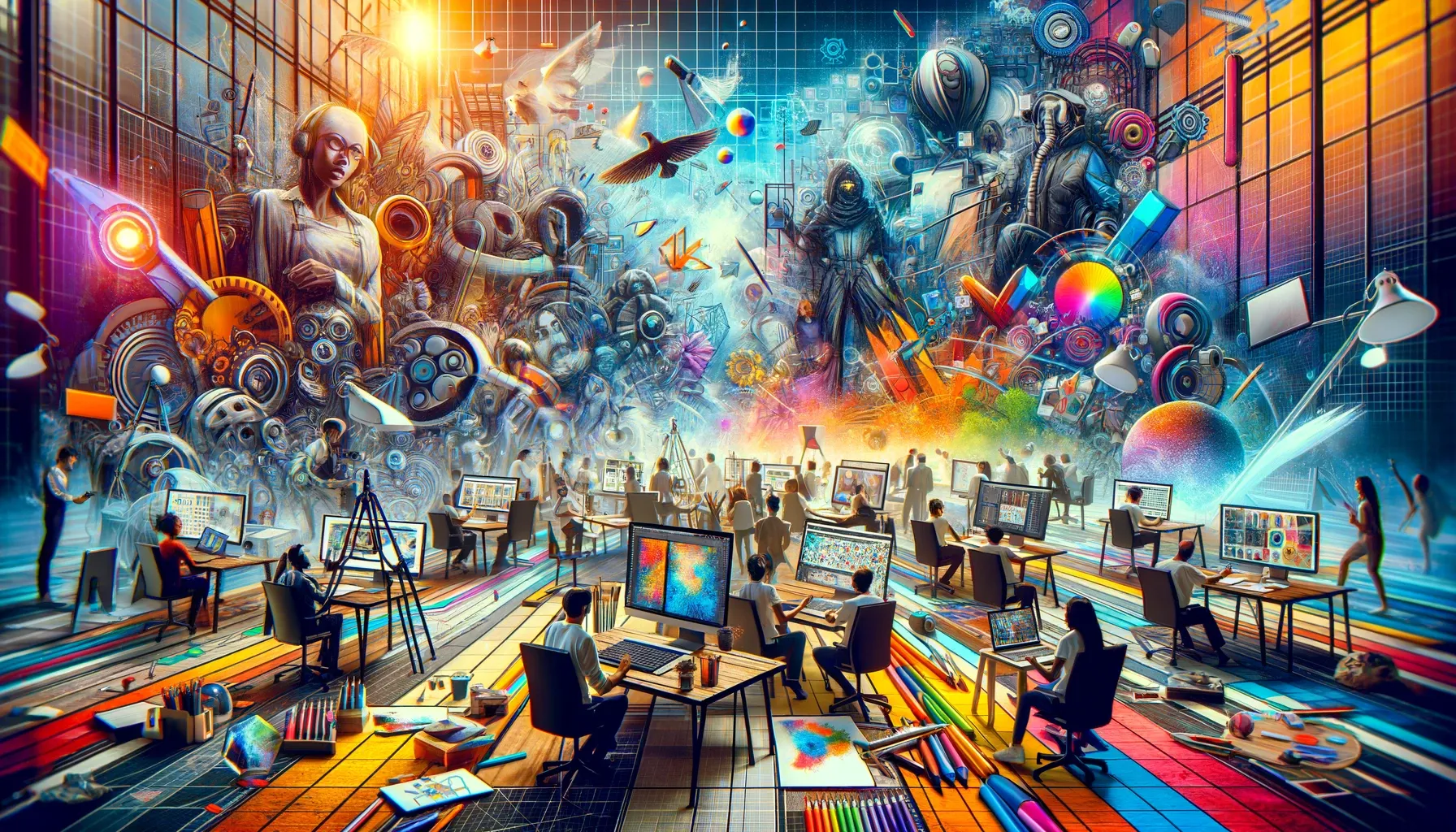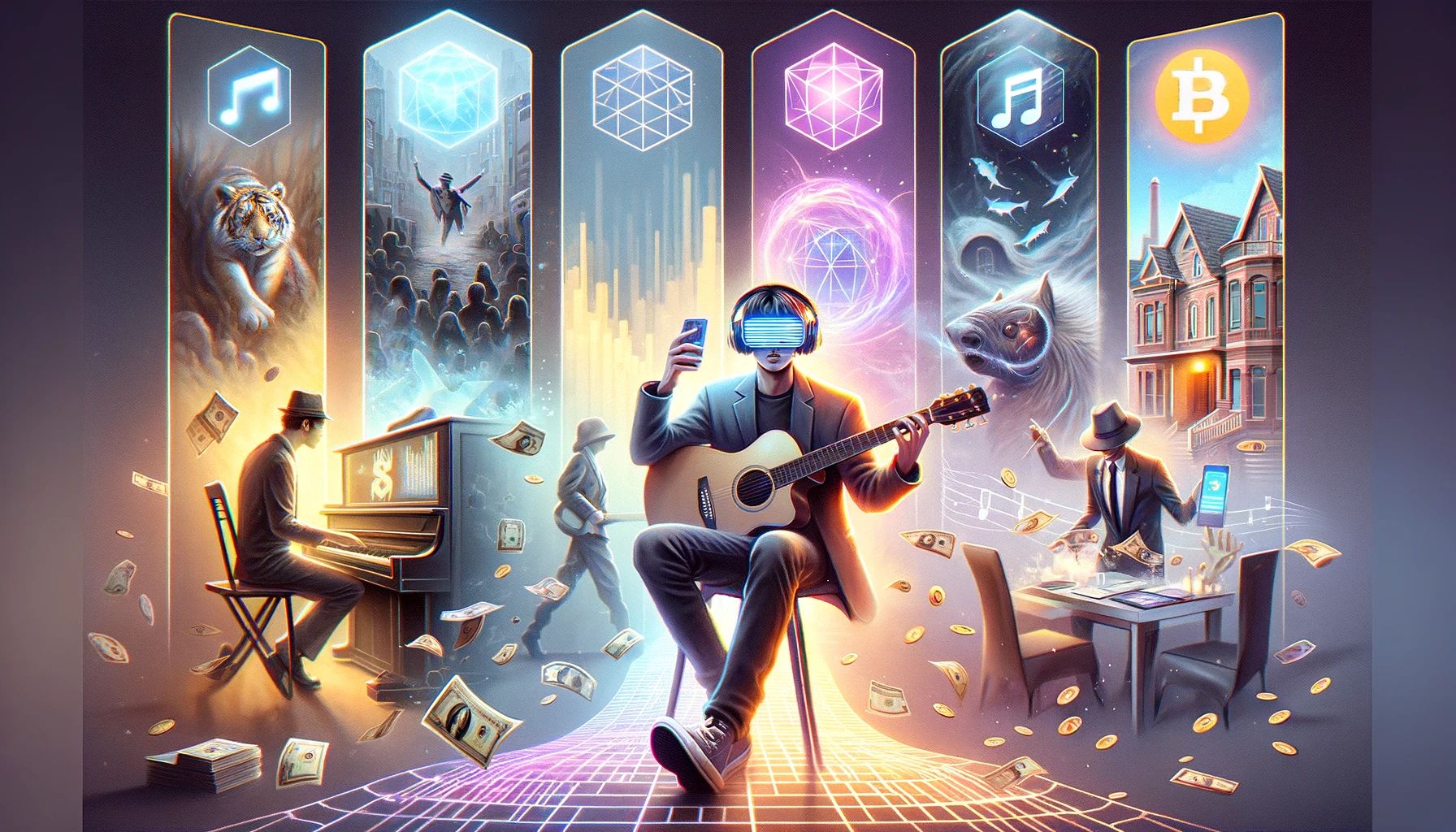Are NFTs Still a Thing in 2023: Unraveling the Current State and Future of NFTs
November 18, 2023 - 11 min read
Explore whether NFTs are still relevant. This article delves into the latest market trends, the impact on various industries & future predictions for NFTs.

As we navigate through 2023, the buzz around Non-Fungible Tokens (NFTs) has taken various turns, leaving many to wonder, "Are NFTs still a thing?"
This article dives into the heart of the NFT world, examining its rollercoaster journey from meteoric rise to the present uncertainties and potentials.
Whether you're a curious onlooker, an avid trader, or somewhere in between, our comprehensive analysis will shed light on current market trends, impactful events, and future prospects of NFTs.
Join us as we unravel the complexities of NFTs in today's digital landscape and what lies ahead.
The Rise of NFTs: Understanding Their Initial Popularity
Non-fungible tokens, or NFTs, burst onto the scene in early 2021, capturing global attention with record-breaking sales and a novel approach to digital ownership. These digital assets, unique and non-interchangeable, are built on blockchain technology, ensuring authenticity and scarcity. Initially, NFTs were predominantly associated with digital art, where they transformed the way artists monetize their work, offering an innovative platform for creators to sell digital pieces directly to a global audience.
The allure of NFTs wasn't confined to the art world. They quickly expanded into various sectors, including music, gaming, and virtual real estate, demonstrating a versatile application of blockchain technology. High-profile sales, such as Beeple's artwork selling for a staggering $69 million and Twitter founder Jack Dorsey's first tweet fetching $2.9 million, exemplified the enormous financial potential within this new digital asset class. This initial popularity was driven by a blend of technology enthusiasts, investors, and collectors, all intrigued by the promise of owning a piece of digital history.
However, the NFT boom also raised questions about sustainability, value, and the speculative nature of these assets. As we delve deeper into the current state of NFTs, we'll explore how these initial trends have evolved and what they signify for the future of this innovative technology.
"Are NFTs Still Relevant?": Major Events and Sales Impacting the NFT Market
As 2023 unfolds, the NFT landscape is evolving, shaped by significant events and market trends. After the initial hype, the NFT market experienced a cooling-off period, prompting many to question its relevance and longevity. Yet, several key developments indicate sustained interest and potential growth areas for NFTs.
Market Fluctuations: The trading volume of NFTs saw a significant spike in early 2023, driven partly by Blur’s incentives and airdrops, but it was followed by a notable decline. This fluctuation reflects the market's volatility but also underscores the continued activity and interest in NFT trading.
Platform Shifts: The NFT marketplace landscape is witnessing shifts in dominance. While OpenSea had been a leading platform, Blur emerged as a strong contender in 2023, attracting real traders with its optional royalty and zero gas fee approach.
Performance of Blue-Chip NFTs: Despite the bear market's impact on blue-chip NFTs, some projects like Bored Ape Yacht Club (BAYC) and Azuki have shown resilience, with notable increases in whale ownership.
NFT Lending Market Resurgence: The NFT lending market has seen a revival, with a significant increase in loans amounting to about $25 million in the first quarter of 2023.
Dominance of Ethereum: Ethereum continues to lead the NFT market, accounting for a majority of the trading volume. This dominance is attributed to its faster transaction speeds, lower costs, and broader application range.
Emerging Competition: New platforms like Blur are challenging established players like OpenSea, indicating a dynamic and competitive market environment.
These developments suggest that while the NFT market may have cooled off from its initial frenzy, it is far from being in decline. Instead, it is evolving, adapting, and entering what many believe to be the early stages of its second major cycle, with significant potential for future growth and broader adoption.
Examining the Current Market Trends: Are NFTs Still a Viable Investment?
In 2023, the NFT market is navigating through a transformative phase, marked by new trends and changing dynamics. Understanding these trends is crucial for gauging the viability of NFTs as an investment.
Diversification Beyond Digital Art: NFTs are expanding beyond digital art into sectors like gaming, music, and virtual real estate. This diversification suggests a broadening appeal and utility of NFTs, indicating their potential to disrupt various industries.
Increased Utility and Real-world Applications: Brands and companies are exploring NFTs for loyalty programs, special access, and adding extra content tied to events or products. This shift from purely speculative assets to utility-driven NFTs reflects a maturing market focusing on real-world applications.
Consumer Perception and Brand Strategies: The perception of NFTs among consumers is evolving. With a shift away from high-priced digital goods, brands are integrating NFTs into their ecosystems more subtly, focusing on enhancing traditional loyalty and engagement programs.
Regulatory Landscape and Sustainability Concerns: The NFT market is increasingly mindful of regulatory considerations and environmental impacts. Efforts to make NFTs more sustainable and compliant with emerging regulations could impact their long-term viability and public perception.
Technological Innovations and Integrations: Advancements in blockchain technology and its integration with other emerging technologies, such as AI, are creating new possibilities for NFTs, potentially expanding their use cases and enhancing their appeal.
While NFTs face challenges and a shift in market sentiment, their expanding utility, integration into various sectors, and ongoing technological innovations suggest that they remain a viable and evolving investment option.
The key for investors and enthusiasts is to stay informed and adapt to the changing landscape of the NFT market.
The Influence of Key Players: Are NFTs Still Attracting Attention?
The trajectory of the NFT market is significantly influenced by key players - from prominent investors to innovative platforms and influential creators. These entities play a crucial role in shaping public perception and market trends.
Prominent Investors and Celebrities: High-profile investors and celebrities have been pivotal in popularizing NFTs. Their involvement often brings media attention and public interest, impacting the market positively. However, as the novelty wears off, the long-term influence of celebrity endorsements remains to be seen.
Innovative NFT Platforms: Platforms like Ethereum have been instrumental in providing the infrastructure necessary for NFT transactions. The rise of new platforms, such as Blur, shows the market's dynamic nature and the ongoing innovation within the space.
Creators and Artists: Digital artists and creators are at the heart of the NFT movement. Their innovative use of NFTs for digital art, music, and other forms of creative expression continues to attract attention and demonstrates the diverse potential of NFTs beyond mere collectibles.
Corporate Involvement: Increasingly, corporations are exploring NFTs, either by launching their own NFT projects or by integrating NFT technology into their business models. This corporate involvement indicates a growing recognition of NFTs' potential in mainstream business sectors.
Community and Social Media Influence: The NFT community, particularly on platforms like X (formerly Twitter) and Discord, plays a significant role in promoting NFT projects and influencing market trends. The vibrancy and activity of these communities can significantly impact the success and visibility of NFT projects.
In summary, while the initial hype may have subsided, key players in the NFT space continue to attract attention and drive innovation. Their actions and decisions will likely shape the future direction and perception of NFTs in the digital asset market.
Beyond Digital Art: Are NFTs Still Transforming Other Industries?
NFTs, initially celebrated for revolutionizing digital art, are increasingly making their mark in other sectors, signifying a broader impact on the digital economy.
Music Industry: Musicians and labels are utilizing NFTs to create unique fan experiences and monetize their work differently. From selling limited edition albums to offering exclusive access to concerts or new releases, NFTs are opening new avenues for artists and fans to connect.
Gaming: The gaming industry is at the forefront of integrating NFTs. By allowing players to own in-game items as NFTs, game developers are not only enhancing the gaming experience but also creating new economic models within virtual worlds.
Real Estate and Metaverse: Virtual real estate in metaverse platforms is being tokenized as NFTs, enabling users to buy, sell, or lease digital properties. This development is creating a new market for virtual assets and experiences, further blurring the lines between the physical and digital worlds.
Fashion and Retail: Some fashion brands are experimenting with NFTs as a way to offer exclusive products and experiences. This includes digital clothing for avatars in virtual worlds and limited-edition physical items linked to NFTs.
Film and Entertainment: The film industry is exploring NFTs for distributing exclusive content, behind-the-scenes footage, and even as a medium for crowdfunding indie projects. This innovation opens up new channels for audience engagement and content monetization.
Sports and Collectibles: Sports franchises and athletes are using NFTs to offer digital collectibles, such as trading cards and memorabilia. These NFTs provide fans with a new way to connect with their favorite teams and players.
These diverse applications across various industries demonstrate that NFTs are much more than a passing trend in digital art. They are actively transforming traditional business models and consumer interactions, showcasing the versatility and potential of blockchain technology in the digital age.
Addressing the Controversies: Are NFTs Still Sustainable?
While NFTs have opened up new opportunities in the digital world, they have not been without controversy, particularly concerning sustainability and environmental impact.
Environmental Concerns: One of the major criticisms of NFTs relates to their environmental impact, as the blockchain technology underlying most NFTs, especially those on the Ethereum network, requires significant energy use. However, with Ethereum's shift to a more energy-efficient proof-of-stake model and the emergence of more sustainable blockchain solutions, the environmental concerns are being addressed progressively.
Market Speculation and Volatility: The NFT market has been characterized by high levels of speculation and volatility. While this can lead to high rewards, it also poses risks for investors and creators alike. The market's maturation is expected to bring more stability, but caution and due diligence remain essential for participants.
Intellectual Property and Legitimacy Issues: Questions around intellectual property rights and the legitimacy of NFTs have been raised. Ensuring the originality and authenticity of digital assets is crucial for the long-term credibility of the NFT market.
Regulatory Landscape: The evolving regulatory landscape for digital assets, including NFTs, poses both challenges and opportunities. Clear regulations can provide much-needed legitimacy and investor protection, but they must be balanced with the innovative spirit of the blockchain community.
Accessibility and Inclusivity: As NFTs grow in popularity, concerns about accessibility and inclusivity arise. Efforts are needed to ensure that the benefits of NFTs and the broader digital economy are accessible to a diverse range of creators and consumers.
Looking Ahead: Are NFTs Still Poised for Future Growth?
As we consider the future of NFTs, several factors suggest they are not only here to stay but also poised for further growth and development.
Technological Advancements: Continuous improvements in blockchain technology and its integration with other emerging tech, like AI and augmented reality, are expanding the potential applications of NFTs. These technological strides could lead to more innovative uses and increased adoption.
Market Maturation: As the NFT market matures, it is expected to become more stable and less speculative. This could attract a wider range of investors and users, looking for long-term value rather than short-term gains.
Diversification and Utility: The expanding use of NFTs in various industries—from gaming and music to real estate and retail—highlights their growing utility and diversification. As NFTs find more real-world applications, their relevance is likely to increase.
Regulatory Clarity: The emergence of clearer regulations around NFTs can provide a more secure environment for investors and creators, potentially leading to greater trust and participation in the market.
Community and Cultural Integration: The growing NFT community and its integration into popular culture are signs of a deepening interest and understanding of NFTs among the general public. This cultural shift could play a significant role in the long-term adoption of NFTs.
Conclusion: Are NFTs Still a Significant Digital Asset in 2023?
In 2023, NFTs continue to be a significant and evolving part of the digital asset world. Despite facing challenges and undergoing market fluctuations, NFTs are making strides in various industries, demonstrating their versatility and potential.
With ongoing technological advancements and a growing understanding of their applications, NFTs are set to remain a key player in the digital economy, offering exciting opportunities for creators, investors, and users alike.
Newsletter
Enter your email address below to subscribe to my newsletter
latest posts





